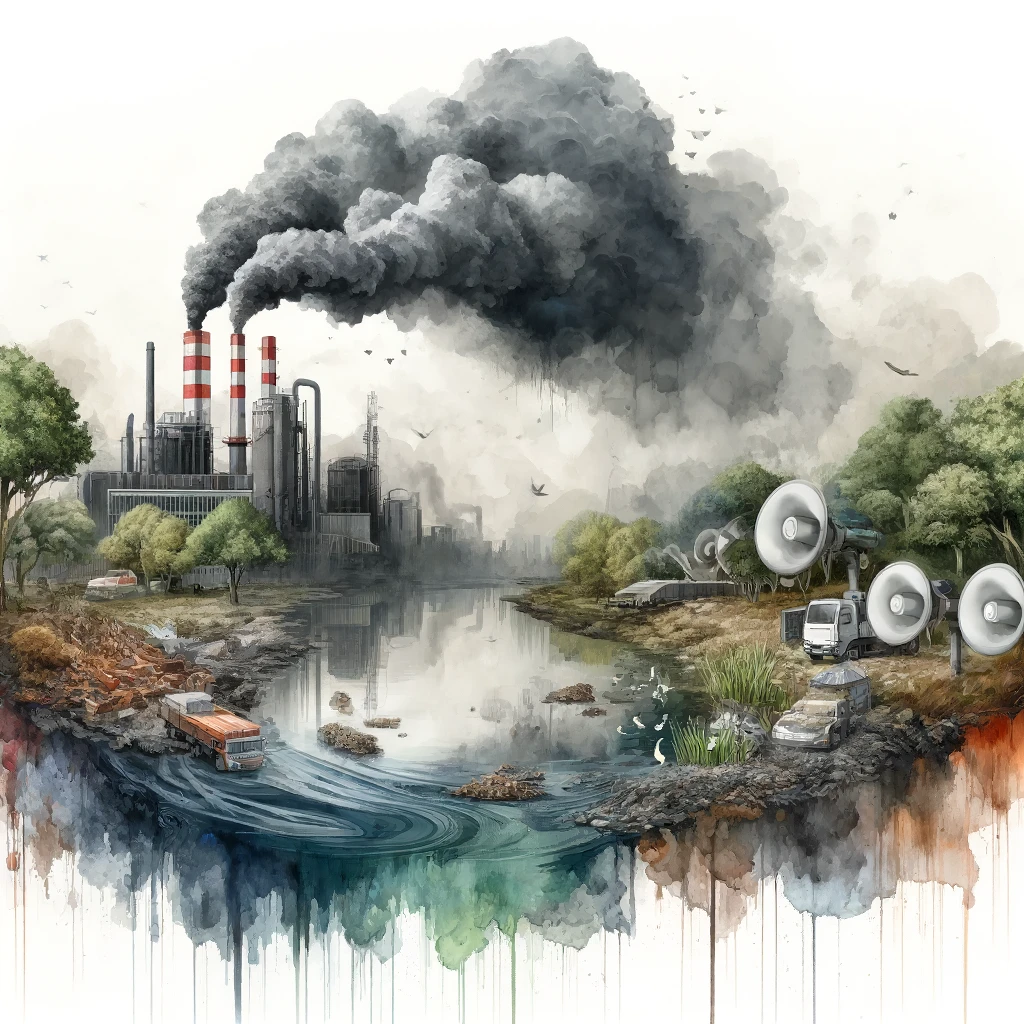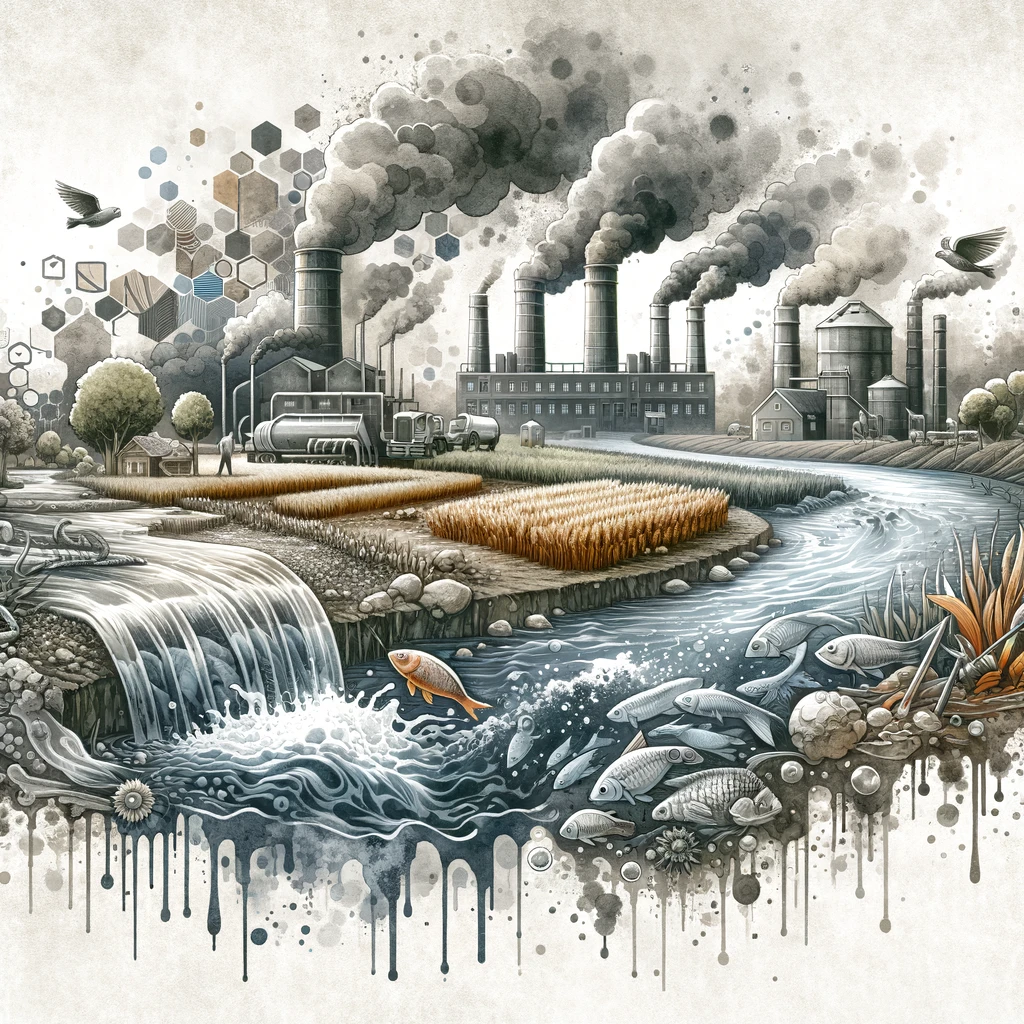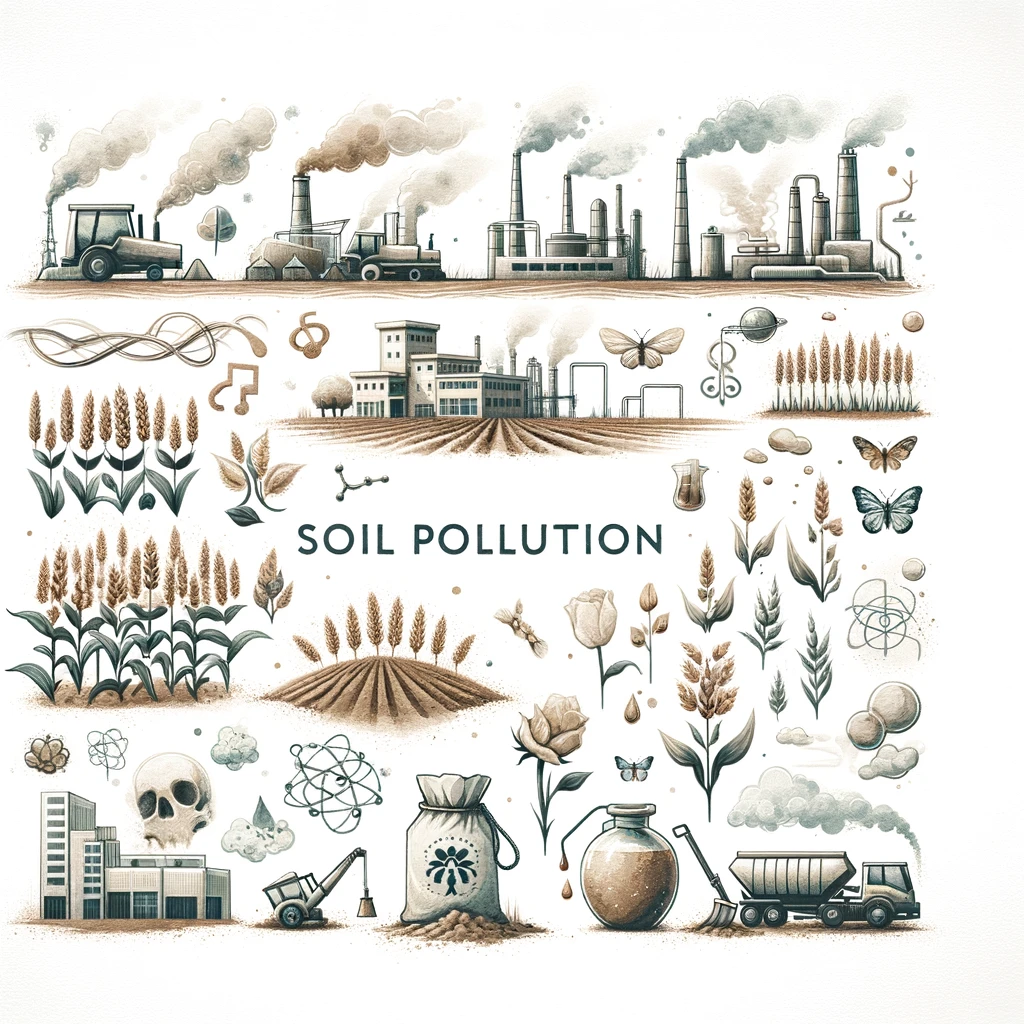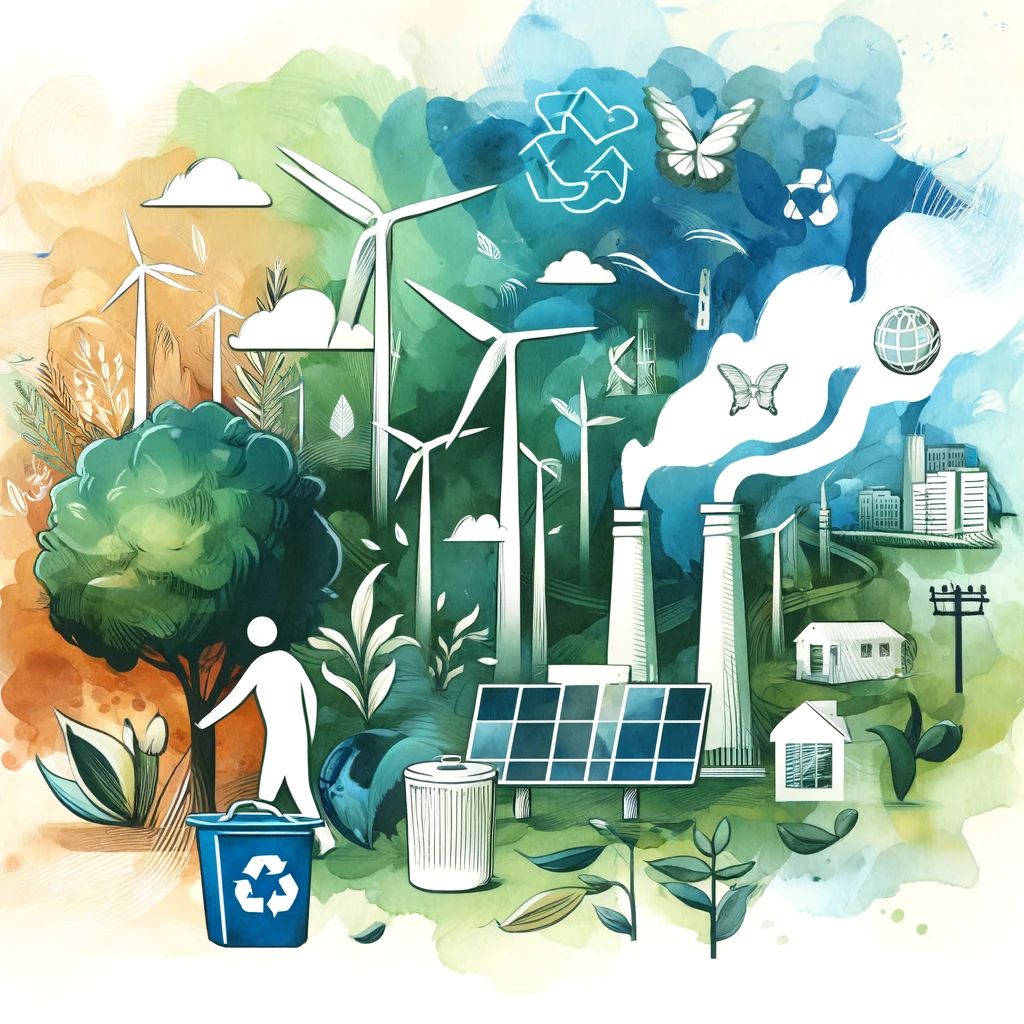One of the most frightening problems the world has at present is environmental pollution. It brings about severe effects on human health, biodiversity, and the proper function of ecological systems. Therefore, it is crucial to determine the differences between the various types of pollution and their primary sources to come up with mitigation strategies. The article will majorly focus on the classification of environmental pollution by source, the effects of the forms of pollution on health and the environment, and air, water, soil, noise, and plastic pollution.

Types and Sources of Environmental Pollution
Environmental pollution comes in so many forms, each emanating from different sources. Generally categorized into air, water, soil, and noise pollution, these types arise both from natural processes and human activities. Understanding these specific types and their origins is important to the effective handling and reduction of their impacts on ecosystems and human health.
Air Pollution
Introducing harmful substances into the atmosphere leads to air pollution. Some of the major sources of air pollution are:
- Industrial Emissions: Factories and power plants release large quantities of pollutants, including sulfur dioxide (SO₂), nitrogen oxides (NOx), carbon monoxide (CO), and particulate matter (PM). These emissions result from the combustion of fossil fuels and industrial processes.
- Vehicle Exhaust: Major contributors to carbon monoxide, nitrogen oxides, hydrocarbons, and particulate matter emissions are cars, buses, and trucks. The rise in vehicular population has increased levels of pollution in cities.
Impact on Health and Environment
Air pollution leads to respiratory and cardiovascular diseases, and lung cancer, and exacerbates conditions like asthma and bronchitis. It also harms the environment by contributing to acid rain, reducing visibility, and damaging crops and forests through the deposition of harmful substances.
Water Pollution
Water pollution is a scenario where harmful substances contaminate water bodies such as rivers, lakes, and oceans. Some of the key sources of water pollution are:
Industrial Discharge: Factories discharge poisonous chemicals, heavy metals, and untreated waste into water bodies. This can poison water and cause harm to aquatic life, thereby disrupting ecosystems.
Agricultural Runoff: A fraction of agricultural runoff directly contributes to rivers and lakes. These contribute nutrients that come from pesticides, fertilizers, and animal waste. This usually results in the growth of harmful algal blooms in water bodies, which in turn depletes levels of dissolved oxygen.
Effects on Ecosystems and Human Health
Water pollution harms aquatic ecosystems, killing fish and other wildlife. Contaminated water can cause diseases such as cholera, dysentery, and lead poisoning in humans who consume polluted water.

Soil Pollution
Soil pollution is the contamination of soil with hazardous substances. Major causes of soil pollution include:
- Pesticide Use: The excessive use of chemical pesticides and fertilizers in agricultural fields contaminates the soil with harmful chemicals, which are dangerous to its health and fertility.
- Industrial Waste: The improper disposal of industrial waste, including heavy metals and poisonous chemicals, contaminates the soil.
Impact on Agriculture and Ecosystems: Soil pollution reduces agricultural productivity by degrading soil quality and affecting plant growth. It also disrupts soil ecosystems, harming beneficial microorganisms and insects.

Noise Pollution
Noise pollution is essentially defined as unwanted or harmful levels of noise in the environment. Some of the most common sources of noise pollution are:
- Urban Traffic: The ceaseless movement of vehicles in cities generates huge noise levels that plague city citizens.
- Industrial Activities: Factories, construction sites, and other industrial operations produce noisy noises, contributing to pollution.
Effects on Health and Wildlife: Prolonged exposure to high noise levels can lead to hearing loss, stress, sleep disturbances, and cardiovascular problems in humans. It also affects wildlife by disrupting communication, mating, and feeding behaviors.
Plastic Pollution
- Plastic pollution is simply the presence of plastic products in the environment. The causes include:
- Incorrect disposal: Plastics that are single-use, such as plastic bags, bottles, and other packaging materials are not disposed of correctly and end up littering the environment.
- Marine debris: When plastics get into the ocean, they break into microplastics, which are majorly consumed by marine organisms, leading to some serious health issues.
Environmental Impact: Plastic pollution harms marine and terrestrial ecosystems, killing animals that ingest or become entangled in plastic debris. It also contributes to soil and water contamination and poses significant risks to human health through the food chain.
Measures to Mitigate Plastic Pollution: Reducing plastic pollution will involve measures such as the ban of single-use plastic, recycling, and re-use, and encouraging the usage of biodegradable alternatives. In addition, public awareness campaigns and stricter regulations on the production and disposal of plastics are necessary.
Conclusion
In conclusion, environmental pollution is a serious threat to the health of our planet and the living things. The solution for pollution cannot come from one angle but can involve demanding laws, sustainable practices, and community involvement. Under this broad understanding of the various types of pollution that are affecting our environment, understanding and hence mitigating these different types, is striving for a cleaner and healthier environment for every creature.
| Environmental Pollution UPSC Notes |
| 1. Environment pollution is the entrance into the environment of substances that cause harm to the health of humans, biodiversity, or ecological systems. 2. Some of the major types are air, water, soil, noise, and plastic pollution. All result from natural and human activities. 3. Air pollution is primarily caused by industrial emissions, like sulfur dioxide and nitrogen oxides, and vehicle exhaust, such as carbon monoxide and particulate matter. 4. Air pollution causes respiratory diseases, cardiovascular diseases, and lung cancer, while also environmental problems like acid rain. 5. Industrial inputs holding chemicals and polluted water with pesticides and fertilizers from agriculture prove to be major sources of toxic water bodies. 6. Water pollution damages the aquatic ecosystems and causes diseases like cholera and lead poisoning in humans. 7. Noise pollution by the sound generated in urban traffic and industries harms the health of human beings as well as wildlife communication. 8. Regarding pollution issues related to improper disposal and marine debris, microplastics start to harm ecosystems and potentially give rise to health risks throughout the food chain. Some measures include banning single-use plastics and encouraging recycling. |


